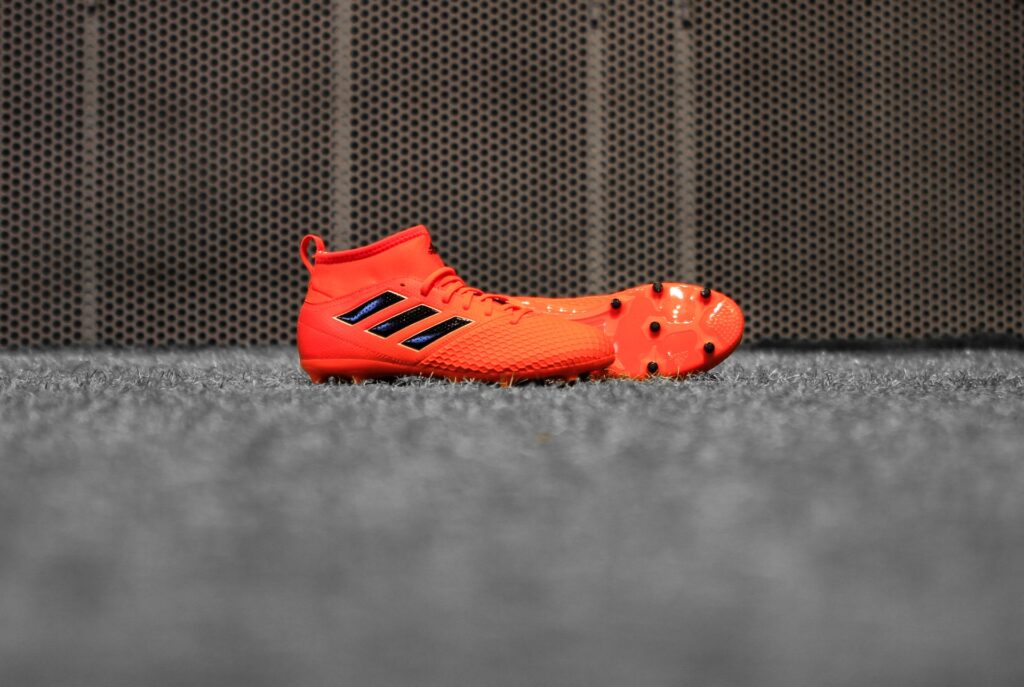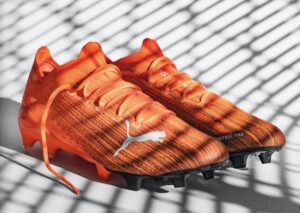From bats and bases to goals and offsides, baseball and soccer are two fundamentally different sports that have very little in common in how they’re played.
Yet, in the footwear the players wear, you’d be forgiven for assuming they were at first glance.
But they’re not the same. So what exactly are the differences in the cleats? Are they interchangeable between the two sports?
What’s the main difference between soccer and baseball cleats?
Soccer cleats tend to be lightweight and less restrictive, designed for players to run effortlessly and fast without feeling weighed down.
However, baseball cleats are usually heavier and offer more protection than soccer cleats. The substantial thickness of these cleats offers protection for errant balls heading toward a batter’s foot and reduces the risk of injury when sliding onto bases.
Other aspects of the cleats differ, too, including the location and length of the spikes, the sole and spike materials, ankle protection, and the brands which manufacture them.
The differences between soccer and baseball cleats
Although it might not appear obvious to those unfamiliar with either sport, baseball cleats and soccer cleats are different in several ways.
Spikes
The word “spikes,” when referring to footwear, might seem a little alien to soccer fans outside of North America, but it’s an apt term when you inspect baseball cleats. They’re long and sharp, offering a greater grip on the dirt.
Soccer cleats, on the other hand, need to be shorter and smoothed at the edges to reduce the risk of harm being caused.
While they have distinctions, these different cleats work in the same way: their spikes add grip and make movement for players as unrestrictive as possible.
Despite their similar functionality, the surfaces that soccer players and baseball players perform on differ greatly, meaning the spikes on the bottom need to be suitable.
A grass soccer field is often watered to the extent that running on it becomes almost impossible without spiked footwear. You’ll probably find it easier to avoid slipping on baseball dirt, but it does require a grip for players to move freely on.
Baseball involves no players tackling each other, meaning baseball cleats can include a spike near the toe on the bottom of the cleat. This toe spike offers support for runners to dig the tops of their feet into the dirt to begin their run from one base to another.
This spike would be too dangerous to have on soccer cleats, however, due to the more physical nature of the sport.
Materials on the spikes of cleats in different sports vary too. These days, soccer seems to have moved away from the metal spikes (though there are still some metal stud soccer cleats available), which were linked to injuries during physical challenges.
Instead, the spikes tend to be molded, made of a more forgiving plastic which is lighter for the person wearing them and easier on those on the receiving end of tackles.
Baseball has no such issues with challenging, however, meaning you still find metal spikes, although plastic is common too.
Structure
In soccer, speed is king. Speed is so sought after that it comes at the expense of safety.
A big criticism of modern soccer cleats is that players are more frequently getting injuries that are preventable. You can still find thicker soccer cleats with greater protection, but they aren’t as popular these days.
The quality of a soccer game would undoubtedly be worse if cleats were still as clumpy as they used to be.
This doesn’t appear to be as much of an issue in baseball. Yes, you want to get from one base to the next as quickly as you can to avoid being run out, but people within the game are acutely aware of the risks posed should you use lighter footwear.
Sliding on baseball dirt isn’t as seamless and smooth as sliding on soccer grass, so it’s important that your feet are supported when making those movements.
Trust us when we say that getting an errant 100mph pitch to the toe is best avoided! The hard cap covering the toes is necessary for baseball yet adds further to the overall weight of the cleat.
Brands

It will come as a shock to nobody that Nike and Adidas, the two largest sports manufacturers on the planet by most metrics, have huge footholds in both soccer and baseball.
There are numerous models of footwear from both brands across the sports. You’re spoilt for choice!
However, perhaps unsurprisingly, for European brands, Puma and Umbro appear to have much stronger ties to soccer than they do baseball.
Similarly, American brands New Balance and Under Armour have a greater presence in making baseball cleats but are not exactly household names when it comes to soccer cleats.You can easily find Mizuno baseball cleats online too.
Some people find that certain brands fit better than others, so it’s always worth heading into a store to try on your cleats before making a purchase.
Price
I apologize in advance to any naive parents whose child is nagging them for the latest release of soccer cleats, but the prices can be steep.
Last year, Americans paid nearly $150 on average for a pair of soccer cleats.
The data for what baseball cleats cost on average is more spurious, but a cursory glance at some of the retailers suggests that they are a little cheaper than soccer cleats.
Check out our recent article in which we reviewed whether expensive soccer cleats are worth the money you pay for them.
Can you use baseball cleats for soccer?
It’s not advised to wear baseball cleats for soccer.
A big reason for this is that baseball cleats feature a toe spike which can cause harm to opponents, so tackling would be an issue. Not to mention that spikes on baseball cleats are longer than soccer cleats, thus adding to the risk.
Although ankle protection might be useful for the players, referees in many soccer leagues simply wouldn’t allow players to wear baseball cleats.
Can you use soccer cleats for baseball?
Many people believe that soccer cleats can, in fact, be used to play baseball if you don’t have a pair of baseball cleats.
It’s important to bear in mind the more fragile makeup of soccer cleats when performing the sliding motion on dirt as opposed to grass and how this could cause injuries.
While you won’t see any professionals doing this, baseball players at the amateur level would be forgiven for using their soccer cleats to save forking out on a new pair of baseball cleats.
Remember that your acceleration might be compromised because of the lack of a toe spike on soccer cleats, but they could work as a temporary solution.
Recap: The difference between soccer and baseball cleats
While there mightn’t be a world of difference between soccer cleats and baseball cleats, each has its details that set them apart from the other.
Now it’s time to wear in your new cleats and get the best out of your performance.

